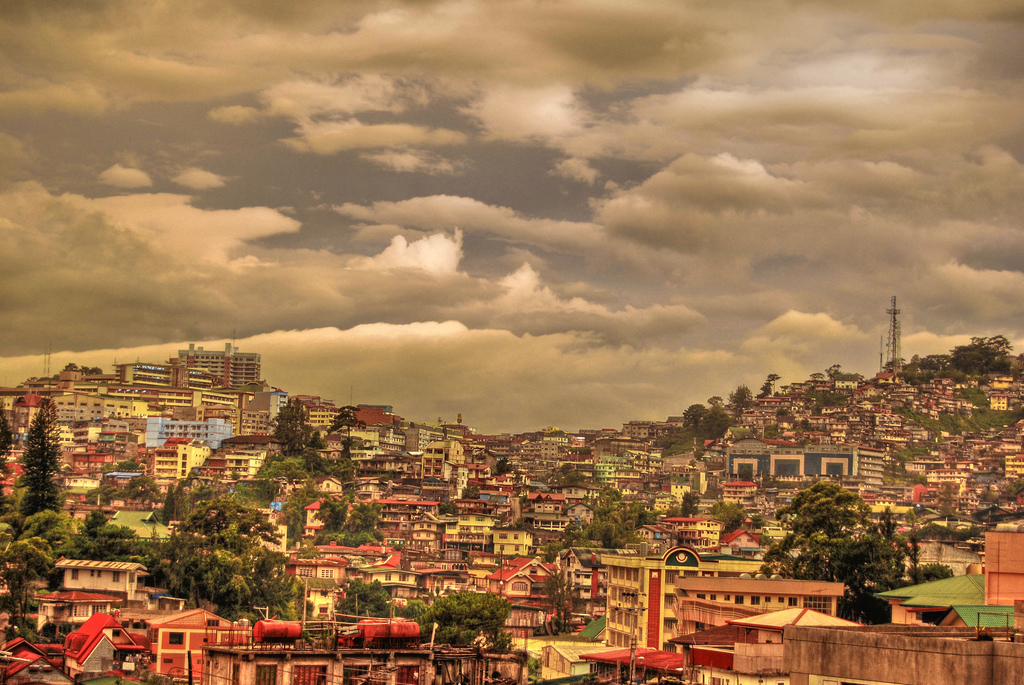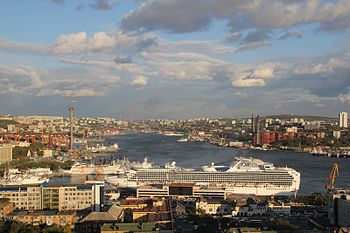Top Outsourcing Hot Spots according to businessweek.com:
1. Buenos Aires, Argentina
 Located in roughly the same time zone as the East Coast of the U.S. (it depends on the time of year), Argentina's huge capital offers a cheap alternative for companies looking to provide customer service for American consumers. IBM and Hewlett Packard already have IT operations in Buenos Aires, which also has a large talent pool of Spanish, English, and Portuguese speakers.
Located in roughly the same time zone as the East Coast of the U.S. (it depends on the time of year), Argentina's huge capital offers a cheap alternative for companies looking to provide customer service for American consumers. IBM and Hewlett Packard already have IT operations in Buenos Aires, which also has a large talent pool of Spanish, English, and Portuguese speakers.
2. Campinas, Brazil Campinas, in Brazil's northeast region, is an R&D center, tapping a large pool of engineering and technology graduates from the local University of Campina. Compared with congested São Paulo, the laid-back city with a population just over a million provides a high quality of life for both local and expat employees.
Campinas, in Brazil's northeast region, is an R&D center, tapping a large pool of engineering and technology graduates from the local University of Campina. Compared with congested São Paulo, the laid-back city with a population just over a million provides a high quality of life for both local and expat employees.
3. Curitiba, Brazil
Already home to customer service centers for the likes of HSBC, Siemens, and ExxonMobil, Curitiba, located in Brazil's southeast, churns out almost 20,000 IT-trained graduates from local colleges. City authorities also have upgraded the telecom and energy infrastructure, creating a brand new outsourcing park for technology-focused companies.
4. Calgary, Canada
Calgary boasts the highest immigration rate of any Canadian city, ensuring it a fast-growing pool of talent. The city also offers tax breaks and research funding for companies that set up shop there, and a large percentage of the workforce is bilingual in English and French.
5. Winnipeg, Canada
The Canadian city outstrips domestic rivals when it comes to overall business competitiveness. High-quality infrastructure, such as state-of-the-art office space and IT parks, helps offset the higher labor costs compared to rivals in the developing world.
6. Santiago, Chile
The Chilean government has set up lucrative financial and technological support to entice high-tech companies to the country's capital. Citigroup and Yahoo! already operate in Santiago, which offers lower operating and living costs compared with cities in the developed world.
7. Guadalajara, Mexico

Despite the recent spate of violence across Mexico, Guadalajara, inland from the country's Pacific coast, continues to attract foreign companies. Roughly 18,000 IT-trained graduates enter the local workforce each year, which has led to a growing hub of software and engineering design centers funded by the likes of Intel.
 8. Queretaro, Mexico
8. Queretaro, Mexico
Located in southern Mexico, Queretaro is quickly becoming an alternative to other domestic outsourcing hubs, such as Monterrey in the north. Local authorities are spending millions to upgrade transport and industrial infrastructure in the hopes of turning the city into an IT service center.
9. Boise, Idaho
Alongside a highly trained graduate pool from Boise State University, Idaho's capital also has a bustling startup scene, which has created a culture of entrepreneurship. The city's lower cost-of-living compared with other U.S. rivals doesn't mean it is a culture backwater. Boise routinely ranks near the top of best U.S. cities in which to live.
10. Indianapolis, Ind.
Not only is Indianapolis located near a number of large U.S. cities, such as Chicago, but Indiana's capital offers several local centers of excellence. The city is well known for its life-science industry and is home to a large IT-trained talent pool of graduates from local colleges. Consultants KPMG also ranked Indianapolis third in a nationwide survey of cities with the most cost-effective tax structure.
11. Sofia, Bulgaria
To make Sofia into an IT hub, city officials have offered tax breaks and other incentives to companies relocating to Bulgaria's capital. Within easy reach of Western Europe, Sofia's labor costs are roughly 10% less than those in Germany, but still twice the Bulgarian average.
12. Zagreb, Croatia
The Croatian capital has a multilingual workforce, a time zone suitable for servicing Western European customers, and labor costs significantly lower than those in countries like Italy and France. Colleges in Zagreb also turn out thousands of IT-qualified graduates each year, which has attracted firms such as Siemens to set up shop there.
13. Cairo, Egypt
With a population proficient in both English and Arabic, Cairo offers outsourcing possibilities for companies from both Western Europe and elsewhere in the Middle East. Local authorities have provided tax incentives for companies establishing bases in the Egyptian capital, which is home to a young, tech-trained population.
14. Belfast, United Kingdom
Putting aside its violent history, Belfast is quickly becoming an outsourcing hub for companies serving the British market. Firms like Microsoft and Citigroup are attracted by the city's youthful population (46% are under 30), large pool of IT graduates, and business costs are one-third lower than in the rest of Britain.
15. Port Louis, Mauritius
Located just off the coast of Madagascar, Port Louis, the Mauritian capital, is routinely ranked as one of the best places to live in Africa. The city's booming tourism industry means the local workforce is well versed in customer service, and the government is spending millions to upgrade domestic IT and transport infrastructure.
16. Gdansk, Poland
An upcoming European soccer tournament means the historic Polish seaside city's infrastructure is getting a major face-lift. That, combined with an IT-trained, local workforce strong in English, German, and Russia, makes Gdansk a cheap alternative to domestic rivals Warsaw and Krakow.
17. Cluj-Napoca, Romania
Already home to the largest percentage of students per capita in Romania, Cluj-Napoca benefits from major university-based tech R&D centers and a growing multilingual graduate pool. Local officials also have provided generous tax incentives to entice foreign tech and manufacturing companies to relocate to the country's third-largest city.
18. Rostov-on-Don, Russia
Despite Russia's recent economic problems, Rostov-on-Don, in the country's southwest, attracted the third-largest amount of foreign investment of any Russian city in 2008. Key to the interest is Rostov's significantly lower business costs than those of domestic alternatives such as Moscow and St. Petersburg.
19. Belgrade, Serbia
Local authorities are working hard to attract foreign companies. That includes a cash grant for every additional job created, and plans to upgrade the city's infrastructure. No wonder companies like Microsoft have set up IT service centers in the Serbian capital.
20. Tunis, Tunisia
With a multilingual population (Arabic, French, English) and close cultural ties to Europe, Tunis is a logical destination for companies looking to service the European market. To add extra incentives, the Tunisian government is planning to spend $3 billion on a financial services business cluster, dubbed the Tunis Financial Harbor, to attract outsourcing clients.
21. Lviv, Ukraine
Like Gdansk, Lviv's infrastructure is set for a major upgrade ahead of a European-wide soccer tournament in 2012. The city also is home to a large population of young IT and engineering graduates, and offers business costs far below those of the Ukrainian capital Kiev.
22. Brisbane, Australia
Brisbane, on Australia's eastern coast, is gaining a reputation as a technology R&D hub. The city has a higher number of tech graduates per capita than any other Australian city, and is surprisingly international—16% of households speak a non-English language. Business costs also are roughly 15% lower than in rivals Melbourne and Sydney.
23. Changsha, China  Already identified by Chinese authorities as one of 13 cities in the nation expected to become outsourcing hubs, Changsha offers benefits well beyond its tech-savvy population and lucrative government incentives. The city, located in central China, is home to nearly 50% of the country's animation companies and is marketing itself as a center for animation outsourcing to the West.
Already identified by Chinese authorities as one of 13 cities in the nation expected to become outsourcing hubs, Changsha offers benefits well beyond its tech-savvy population and lucrative government incentives. The city, located in central China, is home to nearly 50% of the country's animation companies and is marketing itself as a center for animation outsourcing to the West.
24. Hangzhou, China With 18,000 IT graduates entering the workforce each year, Hangzhou is fast becoming a center for financial services outsourcing. In the first three quarters of 2008, the sector represented 43% of the city's total outsourcing business in dollar terms—a figure that is expected to rise despite the global recession.
With 18,000 IT graduates entering the workforce each year, Hangzhou is fast becoming a center for financial services outsourcing. In the first three quarters of 2008, the sector represented 43% of the city's total outsourcing business in dollar terms—a figure that is expected to rise despite the global recession.
25. Ahmedabad, India
With a large population of finance and accounting professionals, Ahmedabad, on India's west coast, is set to become one of the country's major outsourcing centers. The population's English proficiency may not match more-established hubs, but Ahmedabad's business costs are roughly one-third less than cities like Mumbai and Bangalore.
26. Jaipur, India
Jaipur is home to 64 engineering colleges, and soon will open a business-friendly Special Economic Zone complete with 2 million square meters of IT office space. Recently, the city was ranked third in a World Bank report comparing the ease of doing business in Indian cities.
27. Nagpur, India  The Indian city, known for its engineering and medical expertise, already is gaining reputation among international companies. Boeing has established a $185 million maintenance center in Nagpur, and a new 1,220 acre Special Economic Zone being set up near the city's airport will add additional IT office space.
The Indian city, known for its engineering and medical expertise, already is gaining reputation among international companies. Boeing has established a $185 million maintenance center in Nagpur, and a new 1,220 acre Special Economic Zone being set up near the city's airport will add additional IT office space.
28. Penang, Malaysia

Boasting a large, English-speaking IT workforce, Penang is particularly suited for companies looking for higher-end IT outsourcing, such as in the pharmaceuticals or financial services industries. Penang also is developing into an outsourcing center for Islamic banking.
29. Davao City, Philippines Located in the Philippines' southernmost island, Davao City is home to an English-speaking talent pool with many cultural ties to the U.S. That means the city is well-suited for U.S. consumer support, particularly in technological areas due to various IT colleges established in the city.
30. Iloilo City, Philippines Already identified by Philippine authorities as one of the next wave of IT outsourcing centers, Iloilo City has received large government grants to upgrade its IT and transport infrastructure. The well-trained, English-speaking population makes the city an ideal option for companies looking for a cheap alternative for U.S. consumer support.
31. Ho Chi Minh City, Vietnam  Though Vietman is still a communist country, officials plan to turn Ho Chi Minh City into an IT hub by 2010. Big names like IBM and Oracle already have set up shop, taking advantage of lucrative tax breaks and government programs to upgrade the city's infrastructure.
Though Vietman is still a communist country, officials plan to turn Ho Chi Minh City into an IT hub by 2010. Big names like IBM and Oracle already have set up shop, taking advantage of lucrative tax breaks and government programs to upgrade the city's infrastructure.
source:




































































